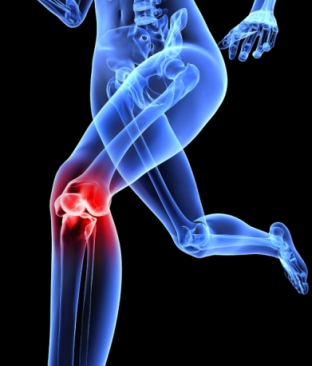
Are Meniscal Injuries the New ACL Injury?
Leave a CommentKnee injuries are back in the news. With recent injuries to high profile players, water cooler chat is shifting from ACL injuries to meniscal injuries. If you want to be the resident sports medicine expert in the office, keep reading for a brief overview of meniscal tears and what they mean for athletes.
When people talk about meniscus injuries, they are typically referring to either the medial or lateral meniscus of the knee. These structures are a special type of cartilage in the knee that serve three very important functions.
3 Functions of the Meniscus
1. The first function is as a shock absorber.
The material that makes up the meniscus is called fibrocartilaginous tissue, which is a lot like a dense rubber. Since the meniscus is located between the femur (thigh bone) and tibia (shin bone), it is in the perfect place to keep the shock from athletic movements from causing damage.
2. The second function of the meniscus is to provide a smooth surface for the femur and tibia to move on.
The rubbery, fibrocartilaginous tissue is smooth and reduces friction between the bones that for the knee joint. This not only makes makes movement fluid, but prevents damage to the bones of the knee.
3. Finally, the meniscus helps provide stability to the knee.
The shape of the meniscus creates a sort of C-shaped cup on each side of the tibia, for the end of the femur to sit in, helping to keep everything where it should be.
Knee meniscal injuries typically happen in one of two ways – an injury event to the knee or degeneration. An injury during activity usually happens with bending and twisting of the knee, like an awkward squat. Degenerative meniscal injuries happen as we age. Over time, the meniscus loses its rubbery properties and can become easier to tear.
There are a few options to treat a torn meniscus.
 1. If the meniscus is torn in an area that has a good blood supply, a surgeon may opt to repair the tear. This will help to maintain the overall health of the knee, but comes with a longer recovery time as the meniscus can be slow to heal.
1. If the meniscus is torn in an area that has a good blood supply, a surgeon may opt to repair the tear. This will help to maintain the overall health of the knee, but comes with a longer recovery time as the meniscus can be slow to heal.
2. If the tear is in a location with poor blood supply, the chances of a repair being successful are slim. In this case, most surgeons will perform a meniscectomy, which simply means removing the torn portion and smoothing out the remaining meniscus. Although you are losing some of the natural anatomy of your knee, you will regain function and have a shorter recovery time than a repair.
3. If you are less active, some surgeons may opt to try injections, physical therapy, or a combination of both to help avoid surgery. This plan can help alleviate the discomfort of a torn meniscus and let one get back to their typical routine.
If you have knee pain catching, locking, or giving way in your knee, it is always a good idea to get the opinion of a health care professional. They can help you figure out a course of action that best fits your lifestyle. Schedule an appointment to see an Athletico physical therapist today.
